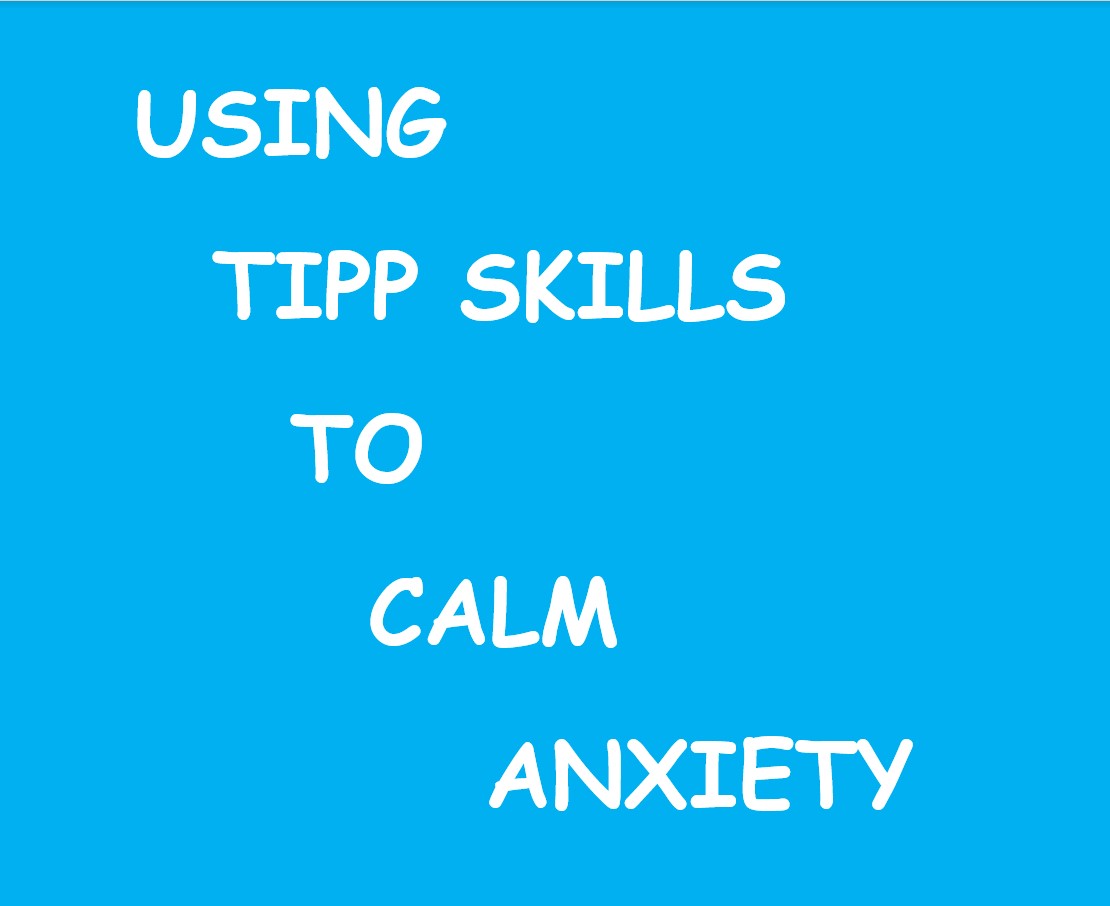
With the stressors of inflation, cultural polarization and wars, more and more people are feeling anxious. It seems that every day new reports are showing how anxiety levels are climbing throughout the world. The social and economic consequences of COVID-19 have resulted in more people seeking professional help to cope.
In many places, the demand for counseling exceeds the availability. Waiting times to get an appointment have grown into the months in some places.
Fortunately, over the past decades, neuroscience has increased not only our understanding of how anxiety arises but also provided effective techniques for dealing with it. I recently took a seminar on an anxiety-reducing approach, TIPP, that greatly increased my understanding of these new techniques.
** It is important to understand that these techniques are not just for therapists. They can be used to help anyone who is struggling with panic attacks or anxiety.
Some Background: The Neurology of Stress and Anxiety.
Everyone knows what anxiety feels like. The range of experience however varies dramatically from an uncomfortable feeling to a fear that one is losing one’s mind or is going to die.
Beyond the feelings, we need to understand the basic neurology of anxiety. Anxiety is not only an emotion that we feel but something that causes physical changes in our bodies.
When the brain’s sentry , the amygdala, detects a threat, the limbic part of our brain secretes the stress hormones of cortical and adrenaline. These hormones alert our body and ready it for a fight or flight reaction .
Specifically, our heart rate increases, sending more blood to the cells. Our breathing rate increases sending more oxygen to the lungs. The liver releases glycogen (sugar) increasing our energy and strength.
The stress hormones triggered by anxiety and panic cause us to experience physical symptoms as well as emotional distress. For example, as our heart rate increases, we feel it pounding. With increased blood flow, we feel warm and sweat. Likewise, with stress hormones, we feel agitated and need to move. All of these reactions are uncomfortable and may, without treatment, interfere with our functioning and even result in serious medical problems.
For years, anxiety and panic have been treated with anxiolytic medication to suppress the symptoms and psychotherapy to identify and resolve underlying issues. More recently, improved behavioral techniques have brought in-the-moment anxiety relief to thousands.
TIPP: The Basics.
The TIFF approach is an acronym of four anxiety-reducing skills: Tip the temperature, Intense exercise, Paced breathing and Paired muscle relaxation. DBT Distress Tolerance Skills: TIPP Techniques (manhattanpsychologygroup.com) Even better, these exercises are particularly effective and easy to learn and use.
— T: Tip the Temperature
Anxiety causes the heart to beat more rapidly thus increasing blood flow throughout the body. As a result, our body temperature rises and we feel hot. Sweating occurs to restore homeostasis (to get back to a non-stressed level). The cooling caused by the evaporation of the sweat alone is insufficient to calm the anxious state.
The simple acts of splashing cold water on your face and/or holding an ice cube in your hand are techniques that, in addition to lowering body temperature, distract your attention away from the discomfort of the anxious feelings and effectively break the panic cycle.
— I: Intense Exercise
Stress hormones also signal the liver to release glycogen (sugar), increasing energy and strength and quickening the muscular reaction time. This increased energy enables us to deal with physical threats.
However, if a physical challenge is not forthcoming, the build-up needs to be released. Intense exercise or even brisk walking burns off the sugar dump and reduces the sense of agitation. When done for twenty minutes, endorphins are released which further soothe and enhance a person’s sense of well-being.
Note bene: Please consult your physician to make sure that intense or aerobic exercise is advisable.
— P: Paced Breathing
When one is experiencing panic, breathing becomes rapid, shallow and not fully exhaled. This brings more oxygen into the body and helps make that person more fit to respond to the perceived threat.
To calm things down, intentionally reversing the breathing pattern, i.e. breathing with a deeper slower pace and with full exhalation gives the all-clear signal to the brain and turns off the neurological alert. We have told people who are upset to breathe for decades . Now we know neurologically why it works.
— P: Paired Muscle Relaxation
Anxiety results in muscular tetanus or tightening. Most people carry their stress in a place in their body such as the shoulders or back. Tightening and loosening exercises can help reduce muscular tension which, in turn, provides a pleasant feeling of relaxation and reduced anxiety.
One More Thing
In addition to these effective techniques, good stress management also requires providing the brain with rest. Of course, restful sleep is crucial but conscious rest is also important. Non-demand neural activity, aka leisure, is necessary to manage anxiety and prevent panic attacks. Taking time off to de-stress is difficult for many who feel they don’t have the time. Nonetheless, it is a necessary part of successful anxiety management. 12 Ways to Reduce Stress by Increasing Non-Demand Brain Activity | Pastoral Counseling Syracuse NY (revmichaelheath.com)
Finally, comprehensive anxiety reduction also requires getting to the underlying root of the problem. Verbal therapy helps discover and root out the underlying causes of anxiety and panic. Prior trauma is often the cause that requires more than simple behavioral techniques to resolve and heal,
So, if you struggle with anxiety and panic, there is good news. A combination of anxiety reduction skills, psychotherapy and, if needed, medication can provide dramatic and lasting relief.
Rev. Michael heath, LMHC, Fellow A.A.P.C. 4 15 2024


